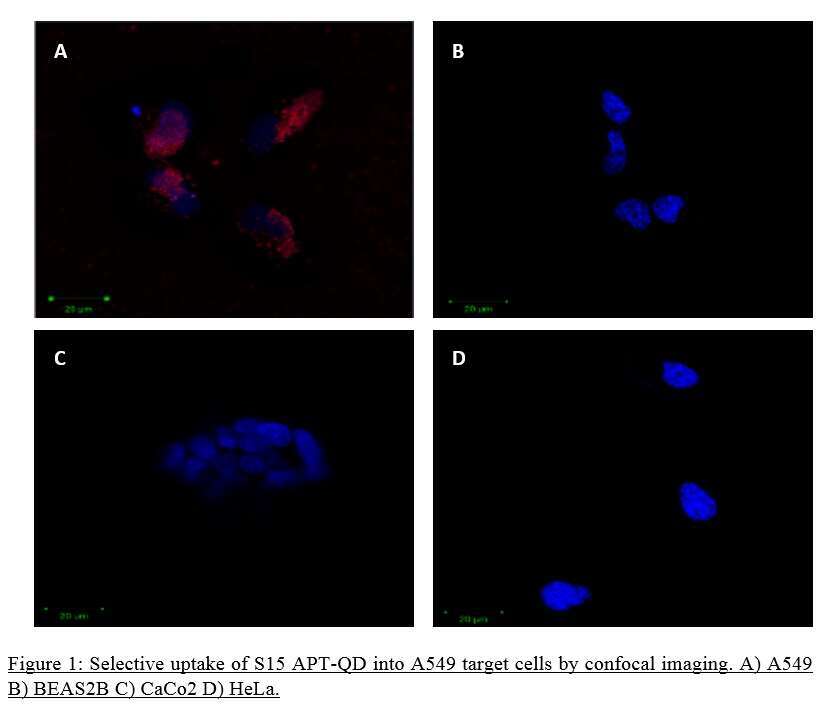
Studying the Mode of Entry of S-15 Aptamers into Target Lung Cancer Cells, as a Potential Selective Targeting Mechanism for Anticancer Drug Delivery
2Biology, Technion-, Haifa, Israel
3Technical Chemistry, Leibniz University, Hannover, Germany
Cancer is one of the leading causes of death worldwide. Lung cancer is the most lethal malignancy and in 2015 alone, 1.7 million deaths were attributed to this cancer globally. Conventional combination chemotherapy requires high drug doses, which cause severe toxic side effects and achieves limited efficacy due to the frequent emergence of drug resistance.
Towards the development of novel nanosystems for targeted delivery of anticancer drugs based on aptamers, as targeting moieties, we herein investigated the modes of entry of a nanomedicine model system, based on quantum dots (QDs) decorated with aptamers (APT), for the selective targeting and uptake by lung cancer cells. Our current results show that the APT-decorated QDs, demonstrated selective binding to target human A549 non-small cell lung carcinoma cells but not to normal human bronchial epithelial BEAS2B cells, cervical carcinoma cells (HeLa) and colon adenocarcinoma cells (Caco2), hence demonstrating a high affinity and selectivity. Moreover, confocal laser microscopy indicated that the uptake into these lung cancer cells occurred via endocytosis. We then studied the specific uptake route and found it involves a receptor-mediated pathway. To further understand the specific pathway responsible for the putative receptor-mediated endocytosis, we employed distinct receptor-mediated endocytosis inhibitors as well as receptor-independent uptake inhibitors and found that the S15 APT-based QDs utilize a classical clathrin-dependent receptor-mediated endocytosis.
APT-based targeting exhibits great promise and is expected to facilitate selective binding and uptake into defined tumor cells, thereby possibly eliminating the need for high chemotherapy doses due to tumor specific-targeted drug delivery.

Powered by Eventact EMS